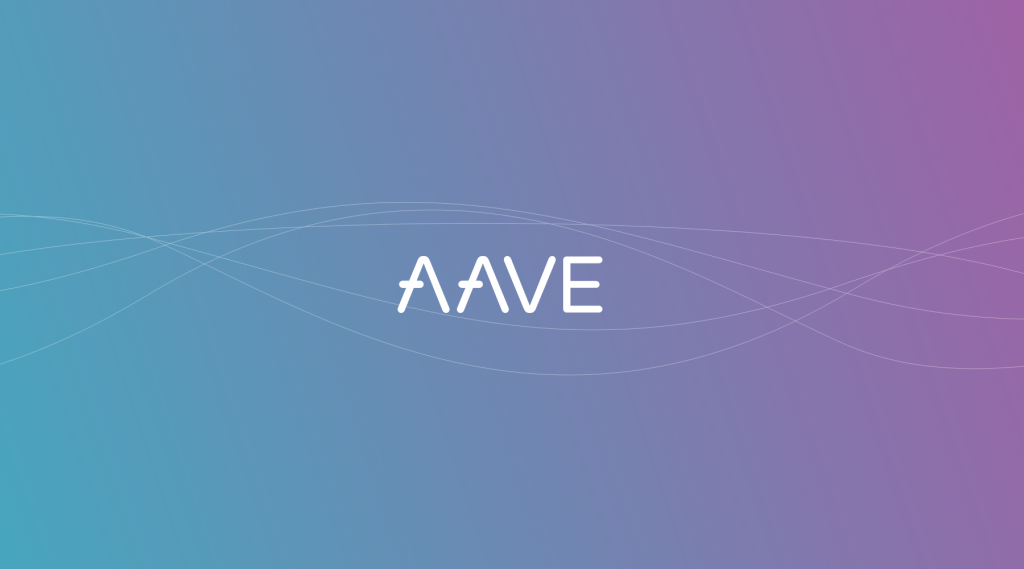Decentralized Finance (DeFi) is the hot topic of the current crypto scene. We provide a general overview of the lending/borrowing protocol Aave, as well as an interview with the Founder and current CEO Stani Kulechov.
Aave (fun fact: the name is taken from the Finnish word for "ghost") is a decentralized, open-source, and non-custodial protocol for money market creation on Ethereum. Depositors earn interest by providing liquidity to lending pools, while borrowers can obtain loans by tapping into these pools with variable and stable interest rate options. Aave Protocol is unique in that it tokenizes deposits as aTokens, which accrue interest in real time. It also features access to Flash Loans and native Credit Delegation for uncollateralized loan options. Currently, Aave Protocol offers 2 markets: the Aave Market and the Uniswap Market.
History of the project
Originally called ETHLend, Aave was founded in 2017 by Stani Kulechov, as the first peer-to-peer lending platform on Ethereum. ETHLend re-branded to Aave when it switched from a peer-to-peer model where borrowers and depositors must be directly matched, to a lending pool model where loans are automatically negotiated and depositors can start earning interest right away.
Aave is headquartered in Shoreditch, London, a global hotspot for FinTech, but the team is decentralized all over the world. The Aave team has grown to 21 people.
Aave launched its flagship product, the Aave Protocol, in January 2020 and since then it has grown to over $1.5B market size, a record growth for the DeFi space. Recently, Aave released its “Aavenomics” proposal for tokenomics and governance, where LEND token holders will be able to vote on smart contract governance updates. The first proposal that the governance will vote on is the migration from the LEND token to the AAVE token, which will occur gradually (1 AAVE=100 LEND). If this migration is approved, the AAVE token will be the governance token for the protocol. AAVE holders will also be able to stake their AAVE in a Safety Module and earn safety incentives in exchange for securing the protocol in case of a shortfall event.
Aave also recently introduced native Credit Delegation, where part A can deposit in Aave and delegate their credit line to party B who can borrow against it without putting up any collateral. The terms are all laid out in a legal agreement with OpenLaw. A depositor could be a DeFi fund looking for credit exposure, and a borrower could be a business, NGO, institution, etc., opening DeFi up as a source of liquidity for all of finance.
We had the great opportunity to talk with the Aave Founder and CEO Stani Kulechov about the project and decentralized finance (DeFi) in general.
CVJ: The DeFi Space is getting a lot of traction at the moment, what are your thoughts on the recent developments?
It’s been a wild ride this year since we launched, and DeFi as a whole is a very hot topic currently. I think it’s been super exciting to watch new projects emerge in the space, and this can bolster DeFi composability—projects building on other projects and creating new products that they see a need for in the space. However, it also comes with its downsides and I think it’s an important lesson for the whole ecosystem. There have been lots of projects that blow up really quickly, but without auditing properly or taking appropriate security measures. There aren’t really any regulations on this stuff yet, so it falls in a legal gray area. At Aave we always focus on security and we hope to set industry standards for this—if you’re going to build complex financial tools then you have a responsibility to uphold the highest standards of security.
Which area of DeFi is the most used at present?
The DeFi lending space and DEXes have been growing a lot recently, and new players have emerged this year. Also, the user experience is getting much better and more intuitive, so new people are discovering the space every day. You can even access DeFi lending protocols like Aave in wallets like Argent that are designed for ease of use and new user onboarding.
What role does Aave play in the DeFi ecosystem?
Aave is a protocol for money market creation where users can lend their digital assets and earn interest on them as they’re loaned out to borrowers, as well as for borrowing digital assets with ease as long as they have enough collateral. You can access Aave directly in the dApp or from many Ethereum wallets.
How regulated is the space and how is Aave dealing with this?
There is currently not a lot of regulation in the DeFi space. Aave takes issues of security very seriously, so we’ve completed 3 audits and we will do more. We also have an ongoing bug bounty program where community members can get a reward for finding any bugs or vulnerabilities in our code. Because there’s not a lot of regulation, we’ve really had to set our own standards, and we hope to make these standards more common practice throughout the whole ecosystem.
Will the borrowing and lending business be taken over from central providers at some time in the future?
In the future, we’re really excited about DeFi and CeFi synergies—both have different offerings, and it’s exciting to see how they can interact. With Credit Delegation on Aave, we hope to explore these synergies further.
On your webpage it says: Aave is a decentralized non-custodial money market protocol where users can participate as depositors or borrowers. Can you elaborate on a typical use case for both sides?
Depositors can deposit digital assets into the Aave Protocol and start earning interest on those assets immediately. The interest they earn is determined by the market and borrowing demand. For example, if the protocol is short on USDC (a USD stablecoin) liquidity and lots of people want to borrow USDC, then the interest rate for depositors will go up to encourage more deposits. On the other hand, when borrowing demand is low and there’s lots of liquidity available, the interest rates for depositors will be lower. For depositors, it’s a great way to earn passive income, as the yield can be higher than in a traditional bank.
Borrowers can be anyone who has a crypto asset, like ETH, needs money for something (i.e. a laptop), but doesn't want to sell their ETH. Maybe they think the price of ETH will go up, so they don’t want to sell. In Aave Protocol, they can simply deposit their ETH and use it as collateral to take out a loan to buy themselves a laptop. As long as they have enough collateral to support their loan position, they can pay it back at any time.
Can you describe Flash Loans to us and explain who uses them?
Flash Loans are a cool money lego designed for developers to borrow without needing to put up any collateral, as long as the liquidity is returned to the pool within one block transaction. If the liquidity is not returned, then the whole transaction gets reversed to ensure the safety of the protocol funds. The most common use case has been arbitrage—a developer will write some arbitrage bots to take advantage of opportunities, and then execute a Flash Loan.
What makes Aave different than competitors in the borrowing/lending field?
Aave has many cool features that makes it different than competitors. One is that deposits are tokenized as Aave interest bearing “aTokens” which accrue interest in real time directly in your wallet. They’re also not locked in the protocol, but rather they can be freely stored, transferred, and traded (in places that accept aTokens). So if you deposit 100 DAI, you get 100 aDAI which then keep earning interest every second.
Flash Loans are another big feature, and these were the first uncollateralized loan option in DeFi. However, now Aave also offers native Credit Delegation, which I spoke about above, another option for uncollateralized loans. Aave also lets borrowers switch between the variable and stable rate to get the best rates when borrowing.
Where do you see the DeFi area in two years and what role does Aave play?
In the future, I see DeFi becoming more interoperable with traditional finance or “OldFi” as it attracts more mainstream depositors and borrowers. Credit Delegation is one way DeFi can enter the mainstream, as it allows DeFi to be used as a liquidity source for the wider world. Aave Limited, our UK entity responsible for integrations and support, recently received an Electronic Money Authorization from the UK Financial Conduct Authority. Revolut and Coinbase also have this license. This was a long process, but this now allows Aave to issue electronic money accounts and facilitate payments and currency conversions.
This is part of Aave’s overall vision of bringing the FinTech and DeFi spaces closer together. This license allows Aave to give users access to DeFi directly from electronic money accounts, opening up DeFi to a wider user base and helping DeFi move toward mainstream adoption. We will start by rolling out this service to UK users, giving them the ability to create accounts and hold electronic money, and eventually we hope to extend this service to the whole Aave ecosystem.
Stani Kulechov is the Founder and CEO of Aave, an open source and non-custodial money market protocol to earn interest on deposits and borrow assets.
Stani was studying law at the University of Helsinki when he first got into Ethereum and he started exploring how it could impact the traditional financial system. In 2017, Stani released ETHLend, one of the first DeFi dApps ever. Since then, he has made it his mission to create tools for an open, transparent, and equitable financial ecosystem through Aave Protocol.



